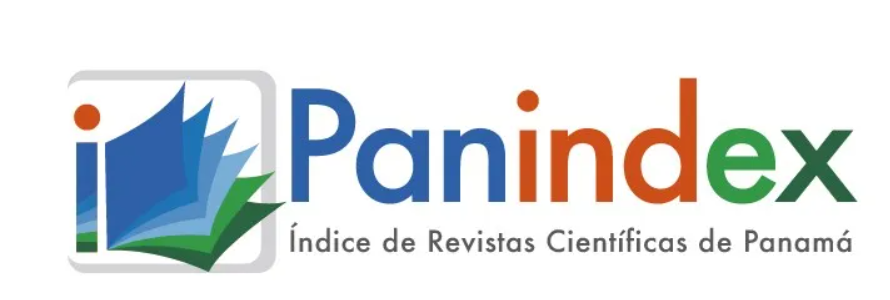The content of the publications and the links suggested in them are the sole responsibility of the authors and not of the METROPOLITAN UNIVERSITY OF EDUCATION, SCIENCE AND TECHNOLOGY (UMECIT) or DIALOGUS magazine. They are protected by international copyright laws as well as the UMECIT and DIALOGUS logos, hence their reproduction is totally prohibited.
This work is licensed under a Creative Commons Attribution-NonCommercial-NoDerivatives 4.0 International License.
The authors maintain the copyright and transfer the right of the first publication to the journal, with the article registered with Creative Commons Attribution-NonCommercial-NoDerivatives License, which allow others They can download the works published in this magazine and share them with other people, as long as their authorship is recognized, but they cannot be changed in any way nor can they be used commercially.
Authors are recommended to include their work in social networks such as Researchgate and institutional repositories once the article or visible fact has been published on the journal page, without forgetting to include the digital document identifier and the name of the journal.



Abstract
This research had as main purpose to evaluate the main Digital Content Canaima Education Project’s in the area of Language in the National Bolivarian Schools Elementary of School Municipality No. 3 Maracaibo at the Zulia State. The theory was based on Pinto (2011), Rodriguez (2010), Garcia (2010), Ponce (2011), Navarro (2009), Gil (2001), Trevejo (2010), Poza (2006), Pressman (2002), Jimenez (2011), and the foundations of Canaima Education Project issued by the Ministry of Popular Power for Education (2009). From the methodological point of view was a descriptive research and its design was considered non-experimental and field. A population census was used consisting of 10 teachers and 120 students from three (3) schools attached to the City School No. 3. For data collection was used two (2) questionnaire with dichotomous response options (Yes - No). The first directed the staff consists of 42 items and the second aimed at students with 28 items. Both instruments were validated under the criteria of 5 experts and its reliability was determined using the method of Kuder Richardson, obtaining a reliability coefficient 0.72 and 0.73 respectively. For statistical treatment of data was used the Microsoft Excel 2007. The research results show that the dimensions of accessibility, functionality, requirements themselves, navigability and design a high value obtained according to the schedule established. In this sense it is concluded that digital content Education Project Canaima meet all the technical, pedagogical allow its application in the sub-primary education system that implements the Venezuelan government. It also raises a periodic review from the point of the learning process, technology, that strengthen conditions considered in the current digital content.
Keywords
References
Castañeda (2006) Metodología de la investigación estructura de una investigación edición Nº 3.
Centro Electrónico de Información e Investigación documental para la Salud (2007), Internet. Reto para el nuevo milenio. Publicación técnica. España.
Cisneros, (2011). La educación como punto importante de investigación. Eureka edición 12.
Consejería de educación de Cantabria, (2011), Control del funcionamiento de los Centros Docentes, calendario escolar, elaboración de estadísticas de enseñanza y mapa escolar. Creación, puesta en funcionamiento y modificación de centros docentes. España.
Chávez Alizo, N. (2007), Introducción a la investigación educativa. Maracaibo: Gráfica González, 2007. Venezuela.
Chiarani, M (2005), Evaluación del Software Educativo a través de Internet, Primeras Jornadas de Educación en Informática y TICS en Argentina. Argentina.
Gil Cantero, F. (2001), Educación y crisis del sujeto. Teoría de la Educación. Revista Interuniversitaria, 13 (2001). Ediciones Universidad de Salamanca (España).
Hernández, S, Fernández, C, y Batista P. (2006) Metodología de la Investigación. Mc. GRAW-HILL. Cuarta Edición, México.http://edutec.rediris.es/revelec2/revelec34/.
Linares S. (2004), Análisis de sistemas de navegación de sitios Web. http://openaccess.uoc.edu/webapps/o2/bitstream/10609/447/1/27698tfc.pdf .
Malhotra, N. (2005). Investigación de Mercados. Un enfoque práctico. México: Prentice-Hall Hispanoamericana S.A. Ministerio del Poder Popular para la Ciencia, Tecnología e Industrias
Intermedias (2010), La construcción multimedial para la educación. Serie de libros técnicos. Gobierno Bolivariano. Ediciones América. Venezuela. Norton F. (2000), Media Comp. http://www.icesi.edu.co/blogs/zoogestion/files/2012/01/articulo-para-simposio-julio-2011.pdf
Pinto, H. (2011). Educação histórica e patrimonial: conceções de alunos e professores sobre o passado em espaços do presente (Tese de doutoramento em Ciências da Educação). Universidade do Minho, Portugal.
Pozo, J. (2006). Las teorías implícitas sobre el aprendizaje y la enseñanza, en J. Pozo et al., Nuevas formas de pensar la enseñanza y el aprendizaje, Barcelona: Grao, pp. 95-132.
Trevejo A. (2010), Joomia para principiantes. http://www.IvLabs.org.
Vahughan (1995), Arquitectura de un Sitio Web para la Enseñanza-aprendizaje de la Representación Ortogonal de Volúmenes. http://dialnet.unirioja.es/servlet/articulo?codigo=2861934
Downloads
Publication Facts
Reviewer profiles N/A
Author statements
- Academic society
- Universidad Metropolitana de Educación, Ciencia y Tecnología
- Publisher
- Universidad Metropolitana de Educación, Ciencia y Tecnología




















